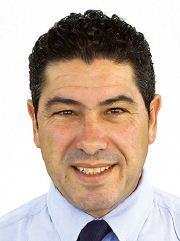- FMA
- The Fabricator
- FABTECH
- Canadian Metalworking
Tool Tech: Shaping the future of chips
Chipformers are now widely used for the purposes of chip control.
- By Rafi Ravoach
- September 24, 2015
In metalworking, a major cause of damage to tooling is chip interference. To help overcome this problem, chipformers are now widely used on cutting tools for the purposes of chip control.
In short, chipformers are specially designed geometric depressions located after the cutting edges of turning inserts. They channel the machined chips and produce the desired chip shapes that can be effectively controlled. These efficient chip forms consume less power; they result in reduced heat generation and most importantly they are able to quickly evacuate the work zone.
Newly designed turning chipbreakers have been specially formulated to decrease the volume of chips removed from the workpieces during the machining process, which consequently provides efficient chip removal from conveyor belts.
The new turning chipbreakers break the chips into smaller pieces, which enables better workpiece surface finish, prevents chips from tangling around the workpiece during the machining process and simplifies chip removal from the machine.
As a pioneer in the field of chipformer design, ISCAR has a long history of developing and introducing products with advanced chipformers that aid the efficient removal of chips from the tool and workpiece area.
Prompted by the global turning industry’s needs, the latest range of chipformers began as concepts that were assessed and developed by finite element analysis programs. This meticulous evaluation and development process ensured the production of a range of advanced prototypes.
The R&D department then undertook comprehensive practical machining trials, replicating a wide range of turning applications across a variety of metals. This process resulted in further refinements. Only after it became clear that the geometries of the new chipformers represented a major leap forward were the latest products introduced to the market.
Through the use of these new turning inserts and their chipformers, less heat is generated, the problem of chips attaching themselves to cutting tools and components is eliminated, workpiece quality is improved, insert life is extended and productivity gains are achieved.
The nature of the chips produced in the turning process varies, depending on the material being turned, the type of tool being used, feeds and speeds being applied, and the rate of cutting fluid applied. As the new tool ranges include chipformers capable of satisfying the vast majority of turning tasks and accommodating a wide range of materials, a product code has been applied to each range.
Three new chipformers, R3P, M3P and F3P, were developed for rough medium and finishing turning of steel.
[gallery type="slideshow" link="none" size="full" ids="1003263323,1003263325,1003263324"]
Rough
The R3P chipbreaker is for rough machining of steel with reinforced cutting edge. It has a positive rake angle to reduce cutting forces and for smooth cutting. The machining application range is 4.0-12 mm depth of cut (DOC) and 0.4-1.0 mm/rev (Fig. 1).
Medium
For medium machining of steel and using a reinforced cutting edge, the M3P chipbreaker features a positive rake angle to reduce cutting forces and for smooth cutting. The machining application range is 0.5- to 6-mm DOC and 0.15-0.60 mm/rev (Fig. 2).
Finishing
The F3P chipbreaker for finishing also has positive rake angles for smooth cutting, reduced cutting forces and reduced insert wear, all leading to increased tool life. The finishing machining application area is 0.40- to 2.0-mm DOC and 0.05 to 0.25 mm/rev (Fig. 3).
Globally, many companies are currently enjoying the multiple benefits of using advanced inserts featuring advanced chipformers. Users are reporting that the problem of chips attaching themselves to cutting tools and components has been totally eliminated and that tools are lasting longer and workpiece quality has been improved.
Rafi Ravoach is ISO Turning product manager with Iscar.
subscribe now


Keep up to date with the latest news, events, and technology for all things metal from our pair of monthly magazines written specifically for Canadian manufacturers!
Start Your Free SubscriptionAbout the Author
- Industry Events
MME Winnipeg
- April 30, 2024
- Winnipeg, ON Canada
CTMA Economic Uncertainty: Helping You Navigate Windsor Seminar
- April 30, 2024
- Windsor, ON Canada
CTMA Economic Uncertainty: Helping You Navigate Kitchener Seminar
- May 2, 2024
- Kitchener, ON Canada
Automate 2024
- May 6 - 9, 2024
- Chicago, IL
ANCA Open House
- May 7 - 8, 2024
- Wixom, MI





















